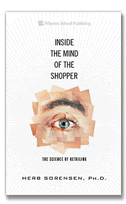A recent article by Jack Neff in Ad Age summarizes well the current and evolving relationship between retailers and their brand suppliers. (Brand Giants Weakened as Retailers Get Savvier - subscription required.) This is neither good nor news to the brands. However, the role of brands is often not well understood or represented at retail. It helps to consider that when a shopper purchases a branded item, they are acquiring three distinct values:
- Intrinsic value. For example, a carbonated beverage will quench your thirst and meet your physiologic need for water.
- Added value. Packaging the beverage and delivering it to you in a convenient, and possibly chilled form, adds value to the intrinsic value of the water.
- Creative value. This third value is in the mind of the shopper, and it is the essence of brand, not really duplicatable.
Because this third, creative value, sometimes seems to be a gossamer wisp, it tends to be misunderstood and abused. It obviously has considerable commercial value, because all profits derive from the difference between costs and prices. The cost of intrinsic value is properly regulated by competition for basic, commodity resources. The cost of added value depends on manufacturing and distribution efficiency, including such things as cleverness of design. So what is the cost of creative value? Unit cost is zero, because once created, the more it is sold, likely the stronger the value.
The point is that once created, creative value is a bountiful source of profits. This is its strength and its vulnerability. The vulnerability is because those who do not own the brand are probably unwilling, at some level, to pay for it. This is the reason brands spend so much time and effort trying to convince the market that their value is really intrinsic or added - "We really are better." There is nothing wrong with a better mousetrap, and part of the value of the brand is the assurance that the brand will provide the "better" product.
But whether designer jeans or bananas, there is that something about the brand that makes a customer feel very good about spending a few pennies or more than a few dollars for it. In fact, that additional creative value is an important part of accelerating the upward growth of society. Think of that creative value as aspirational - something in the soul that long's for improvement and betterment.
In times of economic distress there is always a call for a retreat to only intrinsic and added value. Retailers' first ventures in competing with their brand suppliers historically involved offering intrinsic + added value private-label products only. However, the cutting edge today in retailing is heavily dependent on building strong own-label brands, far removed from the old white label generics.
Of course, retailers can learn how to create brands (creative value,) too. However, retailers have long assaulted the concept of brands by insisting on cutting prices to promote them - not so subtly suggesting that they were overpriced at their regular retail prices.
The point of this is not to oppose supplier-retailer competition, but to point out the importance of creative value as an important aspirational issue for society. Brands, whether of retailers or of their manufacturer suppliers, have an importance that transcends the profits.


